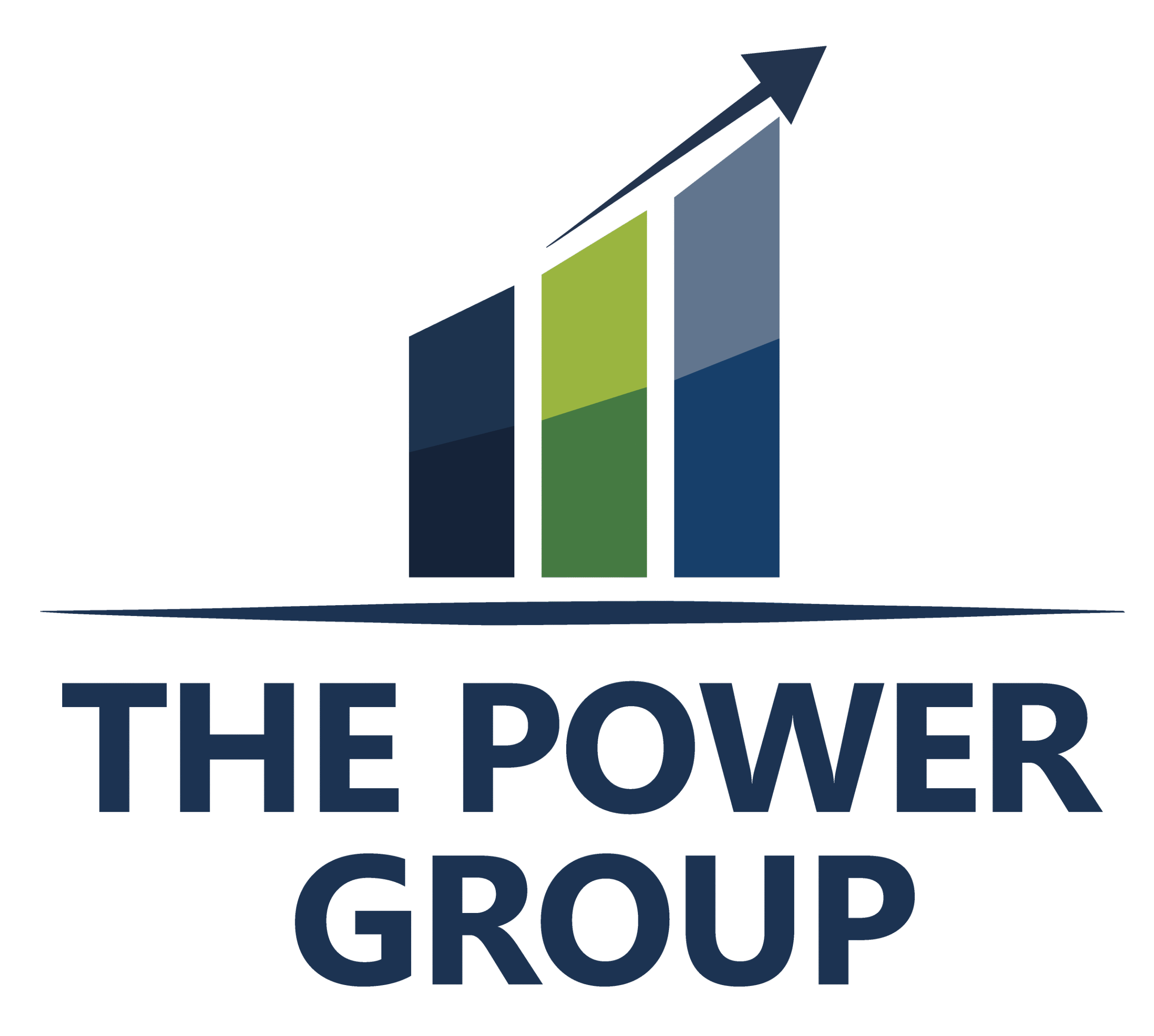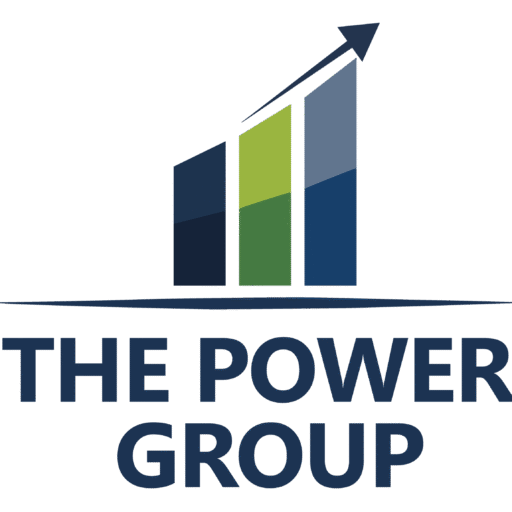Published by The Power Group | Toronto Business Growth Specialists
In the relentless pursuit of new customers, many businesses overlook their most valuable asset: existing customers. While acquisition gets most of the attention and marketing budget, customer retention is where the real profit lies. The numbers are staggering—acquiring a new customer costs 5-25 times more than retaining an existing one, yet increasing customer retention by just 5% can boost profits by 25-95%.
At The Power Group, we’ve helped countless Toronto-area businesses transform their approach to customer relationships, shifting from transactional interactions to long-term partnerships that drive sustainable growth. Through our work with small and medium-sized enterprises across various industries, we’ve discovered that businesses focusing on retention strategies consistently outperform their acquisition-focused competitors in profitability, growth rate, and market resilience.
But customer retention isn’t just about keeping customers—it’s about creating advocates who become your most powerful marketing channel. Retained customers spend 67% more in their 31st to 36th months of relationship than in months 0-6. They’re also responsible for 65% of a company’s business, and satisfied customers tell an average of 9 people about their positive experiences.
This comprehensive guide reveals the proven customer retention strategies that successful businesses use to transform one-time buyers into lifelong advocates, creating sustainable competitive advantages that compound over time.
Understanding the True Cost of Customer Churn
Before diving into retention strategies, it’s crucial to understand the real impact of losing customers. Customer churn—the rate at which customers stop doing business with you—represents far more than lost revenue. It undermines all your acquisition efforts, reduces lifetime value calculations, and creates a constant need to replace departing customers just to maintain current revenue levels.
The Hidden Mathematics of Churn
Most businesses underestimate the true cost of customer churn because they focus only on immediate lost revenue rather than calculating the full lifetime value impact. When a customer leaves, you lose not just their current spending but all future purchases they would have made, potential referrals they might have provided, and the acquisition cost you invested to win them initially.
Consider a customer worth $500 annually who might have stayed for five years—losing them costs $2,500 in direct revenue plus the referral value they would have generated. If you spent $200 to acquire them and they leave after one purchase, you’ve invested $200 to make $500, but lost $2,000 in future value.
The Compound Effect of Retention
Conversely, improved retention creates compound benefits that accelerate over time. Retained customers typically increase their spending as trust builds, require less service and support, provide valuable feedback for improvement, refer new customers at higher rates, and become more forgiving of occasional service issues.
This compound effect means that retention improvements create exponential rather than linear returns. A business that improves retention from 80% to 85% doesn’t just reduce churn by 5%—it potentially doubles the lifetime value of its customer base.
Industry Benchmarks and Reality
Average customer retention rates vary significantly by industry, but most businesses have substantial room for improvement. SaaS companies average 90-95% monthly retention, retail businesses typically see 60-80% annual retention, and service businesses range from 70-90% depending on their industry and business model.
However, these averages mask significant variations. The top-performing 25% of companies in each industry typically achieve retention rates 15-30 percentage points higher than the average, demonstrating that exceptional retention is achievable with the right strategies and execution.
Strategy #1: Create Exceptional Onboarding Experiences
First impressions matter enormously in customer relationships. The onboarding experience—how customers initially interact with your product or service after purchase—significantly influences whether they’ll become long-term advocates or early churners. Research shows that customers who have positive onboarding experiences are 3x more likely to remain customers after two years.
The Psychology of Early Success
New customers are in a particularly vulnerable psychological state. They’ve made a commitment to your business but haven’t yet experienced the full value of their decision. During this period, they’re highly sensitive to any signals that they made the wrong choice while being receptive to experiences that confirm their decision was wise.
Effective onboarding focuses on helping customers achieve their first success as quickly as possible. This “time to value” metric becomes a critical predictor of long-term retention. The faster customers experience meaningful results, the more likely they are to continue the relationship.
Building Systematic Onboarding Processes
Welcome and expectation setting: Immediately after purchase, provide clear communication about what happens next, when they can expect results, and how to get support if needed. Uncertainty breeds anxiety, while clear expectations create confidence.
Progressive value delivery: Structure the onboarding to deliver increasing value over time rather than overwhelming customers with everything at once. Create a series of small wins that build momentum toward larger outcomes.
Proactive support and guidance: Don’t wait for customers to ask for help. Anticipate common questions or challenges and provide guidance before problems occur. This demonstrates expertise while preventing frustration.
Milestone celebration: Acknowledge and celebrate customer achievements during onboarding. Recognition reinforces positive associations with your business and motivates continued engagement.
Feedback collection and optimization: Regularly survey new customers about their onboarding experience and use this feedback to continuously improve the process.
Exceptional onboarding sets the foundation for everything that follows in the customer relationship. Invest in creating systematized, personalized onboarding experiences that consistently deliver early wins for new customers.
Strategy #2: Develop Proactive Customer Success Programs
Traditional customer service is reactive—waiting for customers to contact you with problems or questions. Customer success, however, is proactive—anticipating customer needs and reaching out to ensure they’re achieving their desired outcomes. This shift from reactive support to proactive success management dramatically improves retention rates.
Understanding Customer Success Metrics
Effective customer success programs track leading indicators that predict retention rather than just lagging indicators that measure what already happened. These predictive metrics might include product usage frequency, feature adoption rates, engagement with educational content, support ticket frequency and severity, and achievement of customer-defined success milestones.
By monitoring these indicators, you can identify customers at risk of churning before they decide to leave, creating opportunities for intervention that prevents churn rather than just responding to it.
Implementing Proactive Outreach
Regular check-ins and health assessments: Schedule systematic touchpoints with customers to assess their satisfaction, understand their evolving needs, and identify opportunities to add value. These shouldn’t be sales calls but genuine attempts to ensure customer success.
Usage monitoring and optimization: Track how customers use your products or services and proactively reach out when usage patterns suggest potential issues or opportunities for improvement.
Educational content and training: Provide ongoing education that helps customers get more value from their relationship with you. This might include webinars, tutorials, best practices guides, or personalized training sessions.
Expansion and upgrade guidance: When customers are ready for additional products or services, proactive success programs position these as natural progressions rather than pushy sales attempts.
Renewal and loyalty conversations: Begin renewal discussions months before contracts expire, focusing on value delivered and future opportunities rather than just contract terms.
Proactive customer success transforms the business relationship from vendor-customer to trusted advisor-client, creating much stronger retention and expansion opportunities.
Strategy #3: Personalize Customer Experiences at Scale
In today’s competitive marketplace, generic, one-size-fits-all approaches to customer experience no longer suffice. Customers expect personalized experiences that reflect their individual needs, preferences, and history with your business. However, delivering personalization at scale requires systematic approaches that combine technology with human insight.
The Personalization Advantage
Personalized experiences create emotional connections that transcend purely transactional relationships. When customers feel understood and valued as individuals, they develop loyalty that’s much harder for competitors to disrupt. This emotional connection becomes a powerful retention tool that reduces price sensitivity and increases forgiveness for occasional service issues.
Research shows that businesses delivering personalized experiences see 6-10% higher revenue growth than those using generic approaches, with much of this improvement coming from increased customer retention and expansion.
Systematic Personalization Strategies
Segmented communication strategies: Divide your customer base into meaningful segments based on behavior, preferences, purchase history, or demographics. Create tailored communication strategies for each segment that speak to their specific interests and needs.
Customized product or service recommendations: Use customer data to suggest products, services, or upgrades that align with their demonstrated preferences and usage patterns. Make these recommendations feel like helpful advice rather than sales pitches.
Personalized content and resources: Create educational content, case studies, and resources that address the specific challenges and interests of different customer segments.
Individual relationship management: For high-value customers, assign dedicated relationship managers who understand their business and can provide personalized guidance and support.
Behavioral trigger campaigns: Set up automated but personalized communications triggered by specific customer behaviors—such as decreased usage, milestone achievements, or approaching renewal dates.
The key to successful personalization is using customer data to create more relevant, valuable experiences rather than just inserting names into generic communications.
Strategy #4: Build Community and Connection
Customers who feel connected to your business and other customers are significantly more likely to remain loyal over time. Community building creates retention through relationship networks that extend beyond individual transactions, making it much harder for customers to leave without losing valuable connections.
The Power of Customer Communities
Strong customer communities create retention through multiple psychological mechanisms: social proof that reinforces purchase decisions, peer learning that increases value from your products or services, networking opportunities that provide additional value, and emotional attachment that transcends purely business relationships.
Businesses with active customer communities typically see 5-20% higher retention rates than those without community elements, with the impact increasing over time as communities mature and strengthen.
Creating Meaningful Customer Communities
Exclusive access and insider experiences: Provide community members with early access to new products, exclusive content, or special events that make them feel valued and connected to your business.
Peer learning and knowledge sharing: Create opportunities for customers to learn from each other through forums, user groups, webinars, or networking events.
Recognition and spotlight programs: Celebrate customer successes, showcase innovative uses of your products or services, and recognize community contributors.
Co-creation and feedback opportunities: Involve customers in product development, service improvement, or strategic decisions. This creates investment in your success while improving your offerings.
Local and virtual networking: For location-based businesses, create local customer events. For broader markets, develop virtual communities that connect customers across geographic boundaries.
Our community-building strategies help businesses create engaged customer communities that drive retention while providing valuable networking and learning opportunities for members.
Strategy #5: Implement Value-Based Pricing and Packaging
Pricing strategy significantly impacts customer retention, but not in the way most businesses assume. While lower prices might reduce initial churn, value-based pricing approaches that clearly connect price to delivered value create stronger, more sustainable retention by aligning customer success with business success.
Moving Beyond Commodity Pricing
Commodity pricing—competing primarily on price—creates customers who are inherently disloyal and likely to switch to any cheaper alternative. Value-based pricing, however, focuses on the outcomes and results customers receive, making price comparisons less relevant and retention more likely.
Value-based approaches also enable businesses to invest more in customer success, creating a positive cycle where higher margins fund better service, which drives higher retention and justifies premium pricing.
Implementing Value-Based Retention Strategies
Outcome-based pricing models: Where possible, tie pricing to customer results rather than just products or services delivered. This aligns your success with customer success, creating natural retention incentives.
Tiered value packages: Create service levels that provide increasing value at higher price points, allowing customers to upgrade within your offering rather than seeking alternatives elsewhere.
Performance guarantees and service level agreements: Back your value propositions with guarantees that reduce customer risk while demonstrating confidence in your ability to deliver results.
Regular value documentation and reporting: Systematically track and communicate the value customers receive from your relationship. Make this value visible and quantifiable to justify continued investment.
Flexible engagement models: Offer different ways for customers to engage with your business—monthly, quarterly, or annual options that match their preferences and cash flow patterns.
Value-based approaches create retention by making your business an investment in customer success rather than just a cost to be minimized.
Strategy #6: Leverage Technology for Retention Excellence
Modern retention strategies require systematic approaches that combine human insight with technological efficiency. Customer Relationship Management (CRM) systems, automation platforms, and analytics tools enable businesses to deliver personalized, proactive customer experiences at scale.
Essential Technology Stack for Retention
CRM and customer data platforms: Centralize customer information, interaction history, and preferences to enable personalized experiences and proactive outreach.
Marketing automation and communication tools: Create systematic touchpoint campaigns that nurture relationships without requiring constant manual effort.
Analytics and predictive modeling: Identify patterns that predict churn risk, expansion opportunities, or customer success indicators.
Customer feedback and survey tools: Regularly collect and analyze customer sentiment to identify retention risks and improvement opportunities.
Support and success management platforms: Track customer health metrics, manage proactive outreach, and coordinate retention efforts across teams.
Implementing Retention Technology Effectively
The key to successful retention technology is focusing on customer experience rather than just operational efficiency. Technology should make interactions more personal and valuable, not just more automated.
Start with clear retention objectives and customer journey mapping, then select technology that supports these goals rather than choosing technology first and trying to fit customers into technological capabilities.
Our technology integration strategies help businesses implement retention systems that improve customer experience while increasing operational efficiency and providing actionable insights for continuous improvement.
Measuring Retention Success: Key Metrics and KPIs
Effective retention strategies require systematic measurement and optimization. The businesses that achieve exceptional retention rates track multiple metrics that provide early warning signs of potential churn while identifying opportunities to strengthen customer relationships.
Essential Retention Metrics
Customer Retention Rate: The percentage of customers who remain active over specific time periods. Track monthly, quarterly, and annual retention rates to understand trends and seasonal patterns.
Customer Lifetime Value (CLV): The total revenue a customer generates throughout their relationship with your business. Increasing CLV through retention is often more profitable than acquiring new customers.
Net Promoter Score (NPS): Customer willingness to recommend your business to others. High NPS scores correlate strongly with retention and provide early indicators of relationship strength.
Customer Health Score: Composite metrics that combine usage, engagement, satisfaction, and other indicators to predict retention probability for individual customers.
Churn Rate and Churn Reasons: Track not just how many customers leave, but why they leave. This intelligence enables targeted retention improvements.
Advanced Retention Analytics
Beyond basic metrics, sophisticated retention programs track cohort analysis to understand how retention varies by customer acquisition source, predictive analytics to identify at-risk customers before they churn, segmentation analysis to understand retention drivers for different customer types, and ROI analysis to measure the financial impact of retention investments.
Regular analysis of these metrics enables continuous optimization of retention strategies and early identification of emerging trends that might impact customer loyalty.
Creating Your Customer Retention Action Plan
Understanding retention strategies is valuable, but implementation is where results happen. Creating a systematic approach to improving customer retention requires careful planning, resource allocation, and commitment to long-term relationship building.
Assessment and Prioritization
Start by auditing your current retention performance and identifying the biggest opportunities for improvement. Calculate your current retention rates, analyze churn patterns and reasons, evaluate your existing customer communication strategies, and assess technology and process gaps that limit retention effectiveness.
Prioritize retention initiatives based on potential impact and implementation difficulty. Focus on high-impact, relatively easy improvements first to build momentum and demonstrate results.
Implementation Timeline
30-Day Quick Wins: Implement immediate improvements like welcome email sequences, customer feedback surveys, and basic usage monitoring that require minimal resources but provide measurable impact.
90-Day Foundation Building: Develop systematic onboarding processes, customer health scoring, and proactive outreach programs that create the foundation for long-term retention excellence.
Long-Term Transformation: Build customer communities, implement advanced analytics, and create comprehensive customer success programs that drive exceptional retention rates.
Building Retention Culture
Successful retention requires organization-wide commitment rather than just marketing or customer service initiatives. Every team member who interacts with customers impacts retention, so create training, incentives, and processes that align the entire organization around customer success and retention objectives.
Our retention strategy consulting helps businesses develop comprehensive retention programs that align people, processes, and technology to create sustainable competitive advantages through exceptional customer loyalty.
Conclusion: Your Retention Transformation Starts Now
Customer retention isn’t just about keeping customers—it’s about creating sustainable business growth through relationships that compound over time. In an era where acquisition costs continue rising and customer expectations keep increasing, businesses that master retention will have decisive competitive advantages.
The strategies outlined in this guide represent proven approaches that successful businesses use to transform one-time buyers into lifelong advocates. From exceptional onboarding experiences to proactive customer success programs, from personalized communications to value-based pricing, each strategy contributes to retention excellence when implemented systematically.
But reading about retention strategies won’t improve your customer relationships—only implementation will. Start by choosing one or two strategies that align with your current capabilities and customer needs. Measure your baseline performance, implement improvements systematically, and track results to demonstrate progress.
Remember that retention improvement is a marathon, not a sprint. Small, consistent improvements in customer experience compound over time, creating dramatic improvements in retention rates, customer lifetime value, and business profitability.
Your existing customers represent your most valuable growth opportunity. They already trust your business, understand your value, and have the potential to become powerful advocates who drive sustainable growth through retention and referrals.
The question isn’t whether you should invest in customer retention—it’s whether you’re ready to make the systematic changes needed to transform your customer relationships from transactions into partnerships that drive long-term success.
Don’t wait for a retention crisis to focus on customer relationships. Start building the retention systems and strategies today that will create sustainable competitive advantages for years to come.
Your customers—and your bottom line—will thank you for it.
Ready to transform your customer retention and create sustainable business growth? Contact The Power Group today to discover how our proven retention strategies can help you turn one-time buyers into lifelong advocates who drive consistent, profitable growth.





